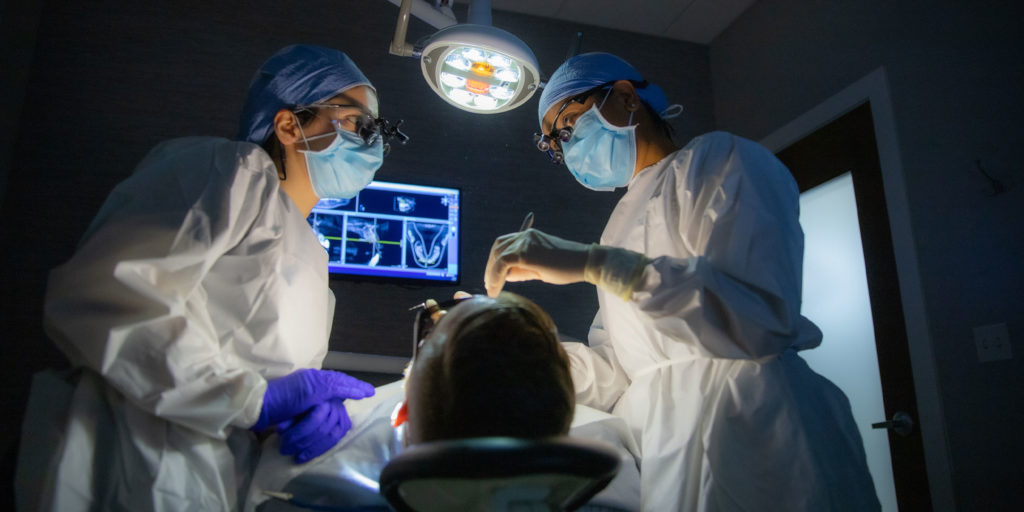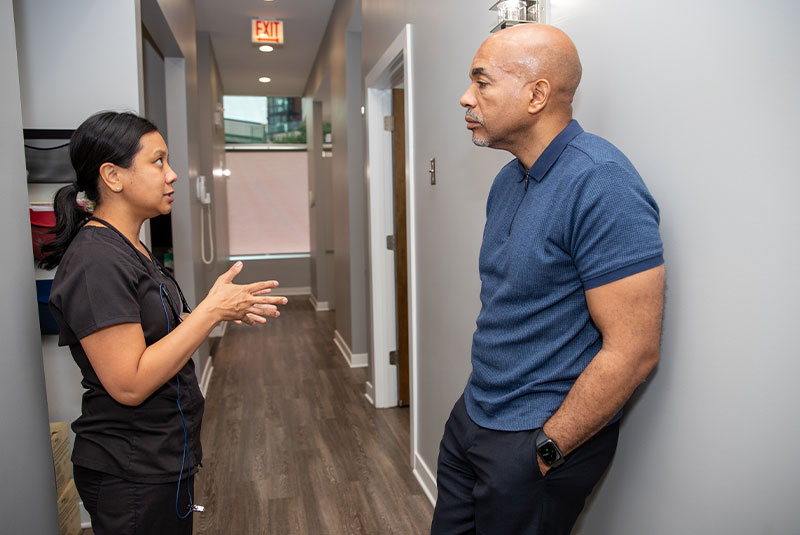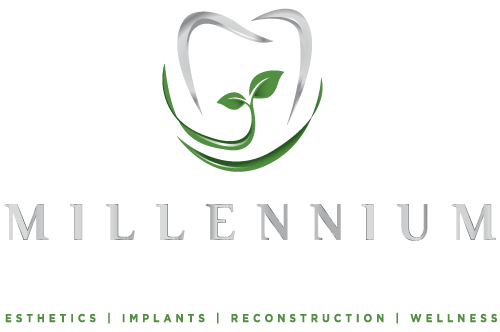

If you’re considering braces, you may be discouraged by the amount of time orthodontic treatment takes as well as the possible need for extractions. Surgically facilitated orthodontic therapy (SFOT) is an advanced interdisciplinary procedure, that pinpoints underlying bone problems, teeth malalignment, arch form and possible spacing concerns, to optimally enhance structural, functional and aesthetic concerns. It may be an option for some patients, whose social or professional responsibilities preclude wearing braces for a long period of time. Also called Wilckodontics or Accelerated Osteogenic Orthodontics (AOO)™ , this interdisciplinary orthodontic and periodontal treatment approach, enables straightening teeth in far less time, with the benefits of addressing long term bone and gum tissue support as well as possibly providing an increased volume in the mouth, particularly if extractions can be prevented with this approach. At Millennium Periodontics, we’re proud to work with orthodontists to provide patients with an alternative option to traditional orthodontics with SFOT in Chicago, IL.
From the dramatic improvements to your self-esteem, to the lasting improvements to your oral and overall health, SFOT can provide interdisciplinary solutions that are designed to offer structural, transformative and long term results.
The process is characterized by a temporary phase of accelerated tooth movement, in addition to increasing the bone and tissue structures surrounding the teeth, which is most likely needed for proper tooth alignment. As a result, the procedure can effectively shorten the duration of orthodontic treatment, and provide an adequate long term foundation for the teeth. It is an alternative method for orthodontic therapy, which can address dental crowding, dental arch constriction, malocclusion, crossbites and possible airway issues. Dr. Christine Gadia and her team work closely with your orthodontist to customize your treatment plan, to achieve the ultimate goals for a healthy and pleasing smile. SFOT also involves the use of digital technology, such as CBCT imaging and orthodontic simulation software in the planning of these cases to achieve the treatment goals.
In order for the treatment to be successful, any diagnosed infections may need to be resolved prior to surgery, and no active disease should be present at the start of your surgical procedure. It’s important that you come in for follow up appointments with the periodontist and orthodontist during treatment for a more precise and longer lasting outcome.


Surgical orthodontics in Chicago, IL involves gum surgery administered with a local anesthetic and sedation if needed.
Surgical methods have been proposed for decades to accelerate tooth movement, such as stimulating cells next to patients’ teeth, decreasing resistance from supporting bone, and even mechanically shifting teeth. While the basic idea of reducing the duration of orthodontic treatment isn’t new, recent advances in orthodontics have made this a reality. Traditional orthodontic treatment with braces involves maintaining constant pressure on teeth to slowly move them through the bone and into position. In adults, this bone has completed the growth process, so it’s both dense and strong. This often results in lengthier treatment which isn’t ideal for aesthetic or practical reasons. In addition, wearing braces as an adult for a lengthy period of time may increase the likelihood of gum recession, bone loss and gum disease, if the teeth are moved beyond the confines of the bone and gum tissue to achieve alignment. By partnering with your orthodontist, there may be another approach to possibly shorten your treatment process while minimizing the risk of structural damage.
Surgical orthodontics in Chicago, IL involves surgical procedures that can be performed with the administration of local anesthetic as well as sedation if needed. During SFOT procedures, Dr. Gadia removes bone around each of your teeth, called corticotomy procedures, then places a bone graft beneath your gums. This temporarily softens and decreases the bone’s natural mineral content, enabling teeth to freely and safely move into proper position, with significantly greater speed and accuracy. When the bone and gum tissue heals, it’s often stronger and denser than before, so teeth remain straight predictably longer than they would with conventional braces alone.

I understand the information disclosed in this form may be subject to re-disclosure and may no longer be protected by HIPAA privacy regulations and the HITECH Act.
